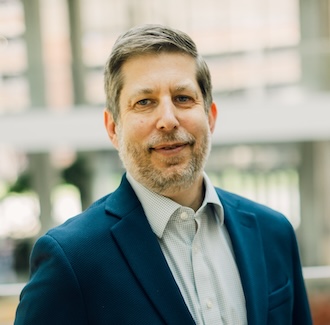Student Spotlight: Jillian Moore
Mar 29, 2021/chwe-newsroom/img_6581-76-copy.jpg?sfvrsn=ddd469ba_0)
As part of our Student Spotlight series highlighting our trainees, we interviewed Jillian Moore, a Master's candidate in our Industrial Hygiene program based at Colorado State University (CSU) in Fort Collins, CO.
How did you find yourself in the field of occupational safety and health? What piqued your interest in studying this field?
I started my career as a process engineer in the oil and gas industry where I received a thorough introduction to occupational health and safety. During that time, I attended a conference where I heard a talk about an alternative industrial safety philosophy that really struck a chord with me, given recent events at my worksite. I dove into learning about this new safety philosophy, which focuses on soliciting the workers’ perspectives to learn from safety incidents and improve work processes.
As a direct result, I decided I wanted to be able to more directly influence the education and safety of frontline workers. I completed a degree in adult education and training from CSU. After completing an internship as an industry trainer, I realized that occupational health and safety combined all of my interests–science, education and safety.
What attracted you to the MAP ERC program?
I was attracted to the interdisciplinary nature of the MAP ERC program as well as the opportunity to learn through applied projects with industry partners. It has been difficult to do this with COVID restrictions but I am hopeful that I will be able to work directly with employers and the OSHA consultation group in the next year.
Tell us about an impactful project you’ve worked on as a part of the program.
I am currently working on my thesis research which involves a comprehensive gap analysis of the Industrial Hygiene (IH) Master’s program, to ensure we are meeting accreditation requirements as well as producing graduates who can meet ever-changing industry needs. We are currently performing a curriculum crosswalk, working with IH professors to ensure that their course learning objectives and assessment mechanisms are in alignment with accreditation criteria. This should help improve student learning and streamline future ABET re-accreditation activities.
We have also been preparing for a group interview with the IH industry advisory board members to discuss the gaps they have seen in recent graduates. Based on this information, we will develop recommendations to address applicable gaps within the curriculum.
How will your training/experience impact the field of occupational health and safety?
I am hopeful that my research project will assist in the continuous improvement of the CSU IH training program as well as other academic occupational health and safety programs. As a result of this research topic, I have been brainstorming several ideas about how to integrate more experiential learning into the IH program and would love to stay involved as an alum to continue to improve training opportunities for future occupational health and safety graduates.
How will your training/experience impact the larger body of workers, families, and communities?
Along with protecting workers through day-to-day monitoring and hazard mitigation activities, my ultimate goal is to use health and safety as a means to develop a culture of trust, collaboration, and learning so that all workers feel physically and psychologically safe, capable, and valued. Creating this kind of culture should have positive effects on worker families as well as their communities. The MAP ERC program has provided me with experience working in interdisciplinary teams and opportunities to look beyond the workplace into the larger community, which has helped me develop a new awareness and confidence I can use in future community outreach activities.
What is the next step for you after exiting the program?
Post-graduation, I plan to get a job as an IH or environment, safety, and health professional at a manufacturing/industrial company. I also plan to become involved in my future local community through educational outreach and/or an adjunct teaching position at a local community college or vocational school.




